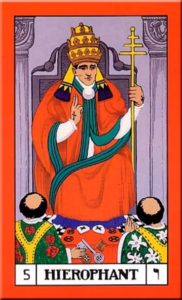
Seeking 101
 The NSAC defines Spiritualism as “the Science, Philosophy and Religion of continuous life, based upon the demonstrated fact of communication, by means of Mediumship, with those who live in the Spirit World.” Of course, the “religion” part is the community of likeminded folk coming together in mutual support. The philosophy is mainly focused on the immortality of our personality. In terms of “-isms,” we lean toward Strict Dualism rather than Physicalism.
The NSAC defines Spiritualism as “the Science, Philosophy and Religion of continuous life, based upon the demonstrated fact of communication, by means of Mediumship, with those who live in the Spirit World.” Of course, the “religion” part is the community of likeminded folk coming together in mutual support. The philosophy is mainly focused on the immortality of our personality. In terms of “-isms,” we lean toward Strict Dualism rather than Physicalism.
The “science” of Spiritualism is a little less evident. A number of physical-spiritual characteristics of reality must be true for Spiritualism to have a foundation based on science. The good news is that there is a lot of contemporary science showing the way. Here are a few of the people I consider contemporary pioneers in Spiritualism.
Psi Field
The effect of thought is generally studied as “psi,” be it psychic sensing or psychokinetic influence. Psychologist William Roll (1926-2012) is usually credited with describing the “Psi Field” as a nonphysical aspect of reality that permeates physical space. It is nonlocal, meaning that an effect experienced one place can be simultaneously experienced everywhere. There is no known way to shield from the influence of psi.
Parapsychologists study reported paranormal experiences, usually with the assumption that the experiences are normal physical-biological effects. Thus, the Psi Field is concerned with the relationship between the greater reality and physical space from the physical person perspective. Spiritualists seek to understand the world from the perspective of immortal personality.
The Psi Field Hypothesis is designed to describe how thought might be propagated. Such a mechanism is a necessary characteristic of reality for everything from simple psychic sensing to the nonphysical nature of mind and survival of consciousness. Think of the Psi Field as an aspect of the etheric which itself is what we sometimes refer to as “in spirit” or Infinite Intelligence.
The Concept is the Thing
The etheric space which mind inhabits—the Psi Field—is conceptual rather than objective. By that, I mean thought deals with information and not the thing information represents. The information we sense from the environment, say touch, smell or a thought from a loved one, is always about the thing the information implies. We are taught to assign physicality to information from our five senses. Else, it is intangible.
In Physicalism, the physical universe is said to have begun as the rapid expansion of a singularity in what is popularly known as “The Big Bang.” Principles organizing the formation of the universe, such as the natural rate of decay and the speed of light in a vacuum, are thought to have come into being in the first moments.
The idea of Natural Law is that there are similar principles organizing the greater reality (etheric). Philosopher Immanuel Kant (1724-1804) argued that the principle was in the thing. We do not have to invent the principle through logic. It exists because reality exists. (philosophynow.org/issues/31/Kant_and_the_Thing_in_Itself)
This idea is given a slightly different spin by physicist David Bohm (1917-1992) who proposed the Implicate Order in which each part contains the whole. Bohm was a quantum physicist and based his ideas on the nonlocal nature of holographic images. In effect, everywhere is represented in the part as the Implicate Order. (bizint.com/stoa_del_sol/plenum/plenum_3.html)
Natural Laws are best considered organizing influences that are inherent in the concept. Think in terms of thoughtforms. A thoughtform is an etheric field that represents a concept. They are organized as a nested hierarchy of concepts. A good example is the nested hierarchy of our human’s body. Each cell is a life field thoughtform. All skin cells are in the “skin nest” which is part of a hierarchy of “nests of other major parts.”
Think of organizing principles as function modifiers such as the idea that perception is moderated by memory and we tend to experience what we expect. While developing the Implicit Cosmology, I found it useful to group important principles by major functions (nested hierarchy again): Reality (8 principles such as Hierarchy and Collective), Formation (11 principles such as Aspectation and Cooperation) and Personality (19 principles such as Curiosity and Discernment). (ethericstudies.org/organizing-principles/)
Body Mind
Biologist Rupert Sheldrake has proposed the Hypothesis of Formative Causation to explain how the morphogenic process “knows” when to tell a dividing cell to produce a different kind of cell, say skin or bone. He argues that a sort of thoughtform containing Nature’s Habit for that species supports every instance of that species. This Body Mind would help explain why every instance of a species is guided by the same instincts.
Morphic Resonance, as the hypothesis is often known, is not mainstream science. This, primarily because mainstream science does not allow for the existence of thoughtforms or a nonphysical space that supports them. However, if mind exists independent of biological brain, consciousness would be a thoughtform supported by the same sort of nonphysical space. I refer to our self-aware, sentient thoughtform as a life field and argue that reality consists of life fields and their expressions.
Many thinkers have proposed a body mind. The metaphysical idea of nonphysical space has been around for years. “Etheric” is a useful term for it. When we model our spiritual anatomy, there is a need to identify a functional area that represents memory and instincts. I refer to that functional area Worldview. When we say we are spiritual being having a human experience, it appears we entangle with our human by way of the Worldview functional area of mind.
There is also a need to show how learning occurs. According to Sheldrake, Nature’s Habit is changed in small increments as one or more instance of the organism finds creative solutions to environmental challenges. That is the same mechanism that we use to learn. Seekers become lucid in small increments. See ethericstudies.org/morphic-fields/
First Sight
We consciously experience our world based on how sensed information is moderated by our mostly unconscious mind. Our worldview acts as the filter so that what we consciously experience is influenced by our human and spiritual instincts, memory and social conditioning.
The degree to which we experience the actual nature of something depends on our lucidity. At birth, we are almost entirely guided by our human instincts with little lucidity, but for some people, conscious determination to experience reality as it is, rather than as they have been taught, results in greater lucidity and discerning intellect. (ethericstudies.org/first-sight-theory/)
First Sight Theory proposed by psychologist James Carpenter is the proposition that everyone psychically senses the world and psychokinetically expresses their intention into the world via their unconscious mind. Perception and expression are developed in the unconscious mind and it is only the outcome of that process of which we are consciously aware.
The theory includes a number of corollaries that describe some of the characteristics of our unconscious mental processing, including the effect of rapid switching of focus, attention on things of interest and the emergence of psychically sensed information into conscious awareness.
Think of First Sight Theory as the ruleset for that part of our spiritual anatomy concerned with development of perception and expression. The implications of the theory directly apply to how a Spiritualist can work to improve lucidity.
Making the World Together
As we learn from First Sight Theory and other sources, perception is generated by the influence of intention on the way environmental information is moderated via worldview. Because of this, we tend to make the world we expect.
Psychologist Kenneth Batcheldor (1921-1988) studied macro-psychokinesis (PK) as it is experienced in the séance room. One of his important contributions to Spiritualism is the possible effect of a sitter’s belief on the production of phenomena. For instance, doing things in a darkroom séance that give sitters a sense that something might happen, even if it is faked at first, helps to suppress sitter doubt. It appears that sitter doubt inhibits production of phenomena.
Physicists Walter von Lucadou took this idea a little further with his study of Recurrent Spontaneous Psychokinesis (RSPK) which is better known as poltergeist activity. He drew a comparison between poltergeist activity which is thought to be caused by a distressed youth (still in the flesh) and the physical phenomena of darkroom séances. He noted that the interaction of the sitters or members of the household is “of fundamental importance” to the production of phenomena.
These studies show us that doubt is a powerful hinderance to psychic functioning … either from the sitter or from the practitioner. Probably the main reason for darkroom sittings is to obscure the sitter’s ability to clearly see, and thereby avoid questioning so much that they block the expected results.
Support Our Modern Pioneers
The pioneers I have mentioned here are amongst many who are finding ways to better understand these phenomena. They are not necessarily Spiritualists and may not express their findings in easy to understand, even spiritualist-relevant terms. As always, it is for the Spiritualist seeker to do the work.
![]()
